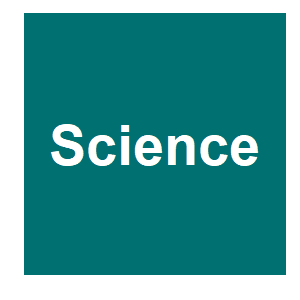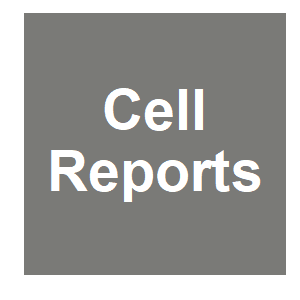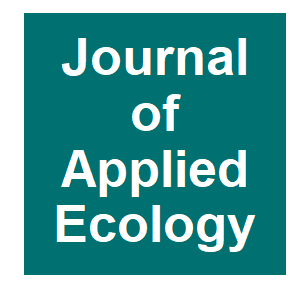
Keywords: genetically modified

|
Toward product-based regulation of cropsF. Gould, R. M. Amasino, D. Brossard, C. R. Buell, R. A. Dixon, J. B. Falck-Zepeda, M. A. Gallo, K. E. Giller, L. L. Glenna, T. Griffin, D. Magraw, C. Mallory-Smith, K. V. Pixley, E. P. Ransom, D. M. Stelly and C. N. Stewart, Science, 377:1051-1053. 2022.
Current process-based approaches to regulation are no longer fit for purpose Much effort has been expended globally over the past four decades to craft and update country-specific and multinational safety regulations that can be applied to crops developed by genetic engineering ... Keywords: assessment, fish, gene drive synthetic, genetically modified, GMO, living modified organisms, LMO, policy, regulation, risk |

|
Researchers propose new framework for regulating engineered cropsNorth Carolina State University, Phys Org, 2022.
A Policy Forum article published today in Science calls for a new approach to regulating genetically engineered (GE) crops, arguing that current approaches for triggering safety testing vary dramatically among countries and generally lack scientific merit—particularly as ... Keywords: assessment, fish, gene drive synthetic, genetically modified, GMO, living modified organisms, LMO, policy, regulation, risk |

|
Cas9-Mediated Gene-Editing in the Black-Legged Tick, Ixodes Scapularis, by Embryo Injection and ReMOT Control.A. a. P. Sharma, Michael N. and Reyes, Jeremiah B. and Chana, Randeep and Yim, Won C. and Heu, Chan C. and Kim, Donghun and Chaverra-Rodriguez, Duverney and Rasgon, Jason L. and Harrell, Robert A. and Nuss, Andrew B. and Gulia-Nuss, Monika,, Cell Reports, 2021.
Despite their capacity to acquire and pass on an array of debilitating pathogens, research on ticks has lagged behind other arthropod vectors, such as mosquitoes, largely because of a lack of genetic and molecular tools. CRISPR-Cas9 is transforming non-model organism research; ... Keywords: assessment, fish, gene drive synthetic, genetically modified, GMO, living modified organisms, LMO, policy, regulation, risk |

|
Next gen insect controlE. Unglesbee, Progressive Farmer, 2021.
Dubbed "self-limiting" insects by their makers, a UK-based biotechnology company called Oxitec, these insects are genetically modified (GM) with an inserted gene that permits only male offspring to survive. Once released into a pest community, the GM insects gradually lower the ... Keywords: assessment, fish, gene drive synthetic, genetically modified, GMO, living modified organisms, LMO, policy, regulation, risk |

|
‘Clever Approach’: Scientists Create GM-Free Organisms Using Genetic EngineeringA. Paleja, The WIRE, 2021.
Farther to the north, researchers at the University of Minnesota have developed a novel way to resolve this problem. They used genetic engineering to create organisms for release that are not genetically modified. Maciej Maselko was a postdoctoral associate at the university ... Keywords: assessment, fish, gene drive synthetic, genetically modified, GMO, living modified organisms, LMO, policy, regulation, risk |

|
WHO Releases a Position Statement on Genetically Modified Mosquitoes for the Control of Vector-Borne DiseasesE. R. Fletcher, Health Policy Watch, 2020.
WHO announced their support for the continued investigation into genetically modified mosquitoes as an alternative to existing interventions to reduce or prevent vector-borne diseases. Keywords: assessment, fish, gene drive synthetic, genetically modified, GMO, living modified organisms, LMO, policy, regulation, risk |

|
Responsible innovation in biotechnology: Stakeholder attitudes and implications for research policyP. Roberts, J. Herkert and J. Kuzma, Elementa, 2020.
Using a mixed methods approach, we analyzed the attitudes of different biotechnology stakeholders, particularly those working in areas related to genetically modified organisms (GMOs) in agriculture and the environment, towards the principles and practices of RI. Homogenous focus ... Keywords: assessment, fish, gene drive synthetic, genetically modified, GMO, living modified organisms, LMO, policy, regulation, risk |

|
Do Africans need genetically modified mosquitoes?genetically modified, mosquito, oxitec, autocidal, SIT, perspective, malaria, gene drive synthetic, engagement,, Mail and Guardian, 2020.
The following is an updated version of an article I wrote for the University of Michigan Risk Science Centre a while ago: Keywords: assessment, fish, gene drive synthetic, genetically modified, GMO, living modified organisms, LMO, policy, regulation, risk |

|
Detecting the population dynamics of an autosomal sex ratio distorter transgene in malaria vector mosquitoesP. Pollegioni, A. R. North, T. Persampieri, A. Bucci, R. L. Minuz, D. A. Groneberg, T. Nolan, P. A. Papathanos, A. Crisanti and R. Muller, Journal of Applied Ecology, 11. 2020.
A sex-distorting autosomal transgene has been developed recently in G3 mosquitoes, a laboratory strain of the malaria vectorAnopheles gambiaes.l. Following the World Health Organization guidance framework for the testing of GM mosquitoes, we assessed the dynamics of this ... Keywords: assessment, fish, gene drive synthetic, genetically modified, GMO, living modified organisms, LMO, policy, regulation, risk |

|
Report of the ad hoc technical expert group on risk assessmentAd Hoc Technical Expert Group on Risk Assessment, Convention on Biological Diversity, 2020.
The Conference of the Parties serving as the meeting of the Parties to the Cartagena Protocol further decided to extend the Online Forum on Risk Assessment and Risk Management to assist the AHTEG and invited submissions of information relevant to the work of the online forum and ... Keywords: assessment, fish, gene drive synthetic, genetically modified, GMO, living modified organisms, LMO, policy, regulation, risk |

|
THE NATIONAL BIOSAFETY TECHNICAL COMMISSION (CTNBio) NORMATIVE RESOLUTION No. 16, OF JANUARY 15, 2018CTNBio, National Biosafety Technical Commission of Brasil, 2018.
Sets forth the technical requirements for submitting an inquiry to the CTNBio concerning Precision Breeding Innovation Techniques. THE NATIONAL BIOSAFETY TECHNICAL COMMISSION (CTNBio), using its legal and regulatory powers and in observance of sections XV and XVI of article 14 of ... Keywords: assessment, fish, gene drive synthetic, genetically modified, GMO, living modified organisms, LMO, policy, regulation, risk |

|
Report of the ad hoc technical expert group on synthetic biologyAd Hoc Technical Working Group, Convention on Biological Diversity, 2017.
In decision XIII/17, the Conference of the Parties to the Convention on Biological Diversity commended the work of the online forum and the Ad Hoc Technical Expert Group on Synthetic Biology (AHTEG) and welcomed the conclusions and recommendations of the report of the AHTEG as a ... Keywords: assessment, fish, gene drive synthetic, genetically modified, GMO, living modified organisms, LMO, policy, regulation, risk |

|
SCIENTIFIC OPINION: In response to the referral of 12 October 2015 concerning use of genetically modified mosquitoes for vector controlHigh Council for Biotechnology, High Council for Biotechnology (France), 2017.
The Scientific Committee’s opinion describes emerging vector control techniques using GM mosquitoes, the current state of research into and development of these techniques and the outcomes of initial experiments worldwide. To date, only one technique has been developed to an ... Keywords: assessment, fish, gene drive synthetic, genetically modified, GMO, living modified organisms, LMO, policy, regulation, risk |

|
Science and Technology Committee Genetically Modified InsectsUK Parliament, UK Parliament, 2015.
The UK is a world leader in the development of this technology. The European Union’s regulatory process, however, is likely to hold back progress. There is a moral duty to test the potential of the technology. We therefore support further research and call for action to test ... Keywords: assessment, fish, gene drive synthetic, genetically modified, GMO, living modified organisms, LMO, policy, regulation, risk |

|
Biosafety for human health and the environment in the context of the potential use of genetically modified mosquitoes (GMMs)WHO/TDR, WHO/TDR Training Manual, 2015.
This Training manual: Biosafety for human health and the environment in the context of the potential use of genetically modified mosquitoes (GMMs) is based on biosafety training courses on GMMs undertaken in Africa, Asia and Latin America from 2008–2011. The courses were ... Keywords: assessment, fish, gene drive synthetic, genetically modified, GMO, living modified organisms, LMO, policy, regulation, risk |

|
Guidance on the environmental risk assessment of genetically modified animalsEuropean Food Safety Authority, European Food Safety Authority, 2013.
This document describes the six sequential steps for the ERA of GM animals, as indicated in Directive 2001/18/EC: (1) problem formulation including hazard and exposure identification; (2) hazard characterisation; (3) exposure characterisation; (4) risk characterisation; (5) risk ... Keywords: assessment, fish, gene drive synthetic, genetically modified, GMO, living modified organisms, LMO, policy, regulation, risk |

|
Progress and prospects for the use of genetically modified mosquitoes to inhibit disease transmissionA. A. James, J. D. Mumford, S. L. James and Y. T. Touré, WHO/TDR, 2010.
The use of genetically modified mosquitoes (GMMs) for disease control has social, economic and ethical implications, so it is important that the World Health Organization (WHO) and its partners provide guidance to countries on these issues. In collaboration with the Foundation ... Keywords: assessment, fish, gene drive synthetic, genetically modified, GMO, living modified organisms, LMO, policy, regulation, risk |

|
Malaria Control with Genetically Manipulated Insect VectorsL. Alphey, C. B. Beard, P. Billingsley, M. Coetzee, A. Crisanti, C. Curtis, P. Eggleston, C. Godfray, J. Hemingway, M. Jacobs-Lorena, A. A. James, F. C. Kafatos, L. G. Mukwaya, M. Paton, J. R. Powell, W. Schneider, T. W. Scott, B. Sina, R. Sinden, S. Sink, Science, 298:119. 2002.
At a recent workshop, experts discussed the benefits, risks, and research priorities associated with using genetically manipulated insects in the control of vector-borne diseases. Keywords: assessment, fish, gene drive synthetic, genetically modified, GMO, living modified organisms, LMO, policy, regulation, risk |

Contact
David O’Brochta
Foundation for the
National Institutes of Health
geneconvenevi@fnih.org
RSS

